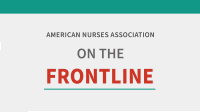The end of the COVID-19 pandemic is in sight. Nurses may think the mental and emotional stressors experienced at the height of the pandemic will abate and things will return to “normal.” But evidence from other disasters indicates that mental and emotional recovery will take time—as long as a year or two, according to the U.S. Department of Health and Human Services Phases of Disaster, 2020 (samhsa.gov/dtac/recovering-disasters/phases-disaster). What we know about disaster response is mainly from one-time dramatic events—such as hurricanes, floods, or man-made catastrophes—but nurses can apply this evidence to plan for recovery from the pandemic. The more nurses understand the disaster response, the more they can guide their own and others’ recovery.


Share


You can also subscribe to American Nurse Journal. Print and digital subscriptions are available. Subscribe Now


















